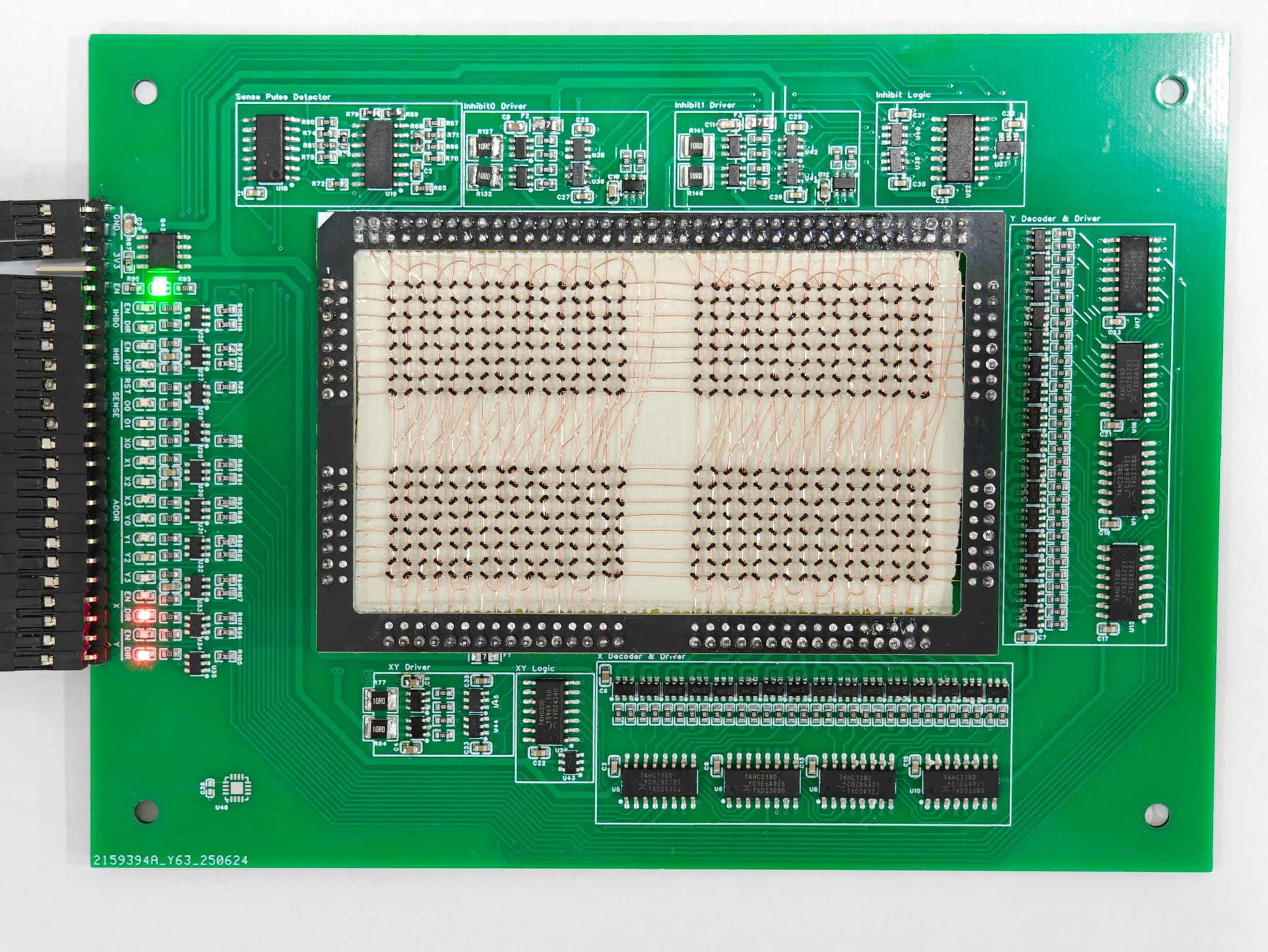The resurgence of magnetic core memory is capturing the attention of tech enthusiasts, particularly through the innovative work of developer Han. This revival centers on a 512-bit MagneticCoreMemoryController that allows users to explore the intricacies of this vintage technology, which once served as the backbone of computing systems throughout the 1970s.
Magnetic core memory operates by utilizing tiny ferrite cores to store data. Each core can be magnetized in one of two directions, representing binary values: a one or a zero. The mechanism for reading data involves a current-based sensing method that erases the existing value, necessitating a read-rewrite circuit. For those interested in the technical details, Han has published a comprehensive write-up on GitHub, outlining the best practices for wiring core memory alongside his controller. This resource is proving invaluable for anyone wanting to delve deeper into the world of magnetic memory.
Technical Insights and Performance
In his detailed guide, Han provides insights into the wiring process, complete with oscilloscope traces that illustrate the significance of each connection. His design brief stands out as possibly the most complete documentation on magnetic core memory produced in recent years. The memory pack he developed has demonstrated impressive reliability, operating continuously for 24 hours while undergoing rigorous memory tests. During these tests, it successfully handled several gigabytes of data with zero errors, highlighting one of the core advantages of ferrite memory: data retention even after power loss.
Though 512 bits may seem modest by today’s standards, it offers enough capacity for experimentation and learning. The retrocomputing community has seen smaller modules, such as the Core 64, which is a playful nod to the past. While some might view these memory modules as nostalgic relics, they represent a significant historical technology that once filled cabinets in computing environments.
Magnetic core memory should not be confused with core-rope memory, another historical technology used primarily for read-only memory applications. Notably, both types were integral to the operation of the legendary Apollo Guidance Computer, which helped navigate humanity’s first journey to the Moon.
As interest in vintage computing technologies grows, many in the tech community are eager to see innovative applications of magnetic core memory. Its simplicity and reliability make it an appealing option for hobbyists and professional developers alike. For those with ideas or existing hacks utilizing this pre-modern memory technology, sharing insights could contribute to a vibrant resurgence of interest in this fascinating field.
